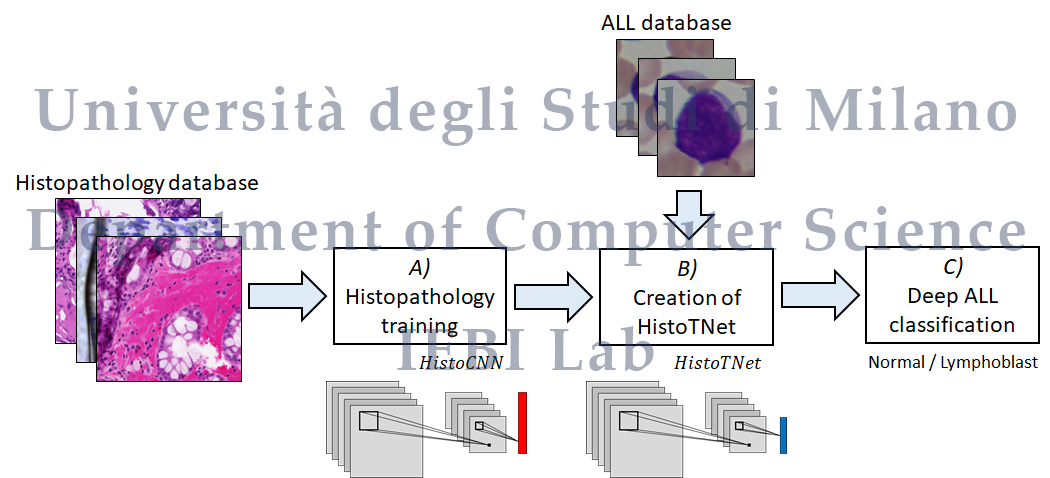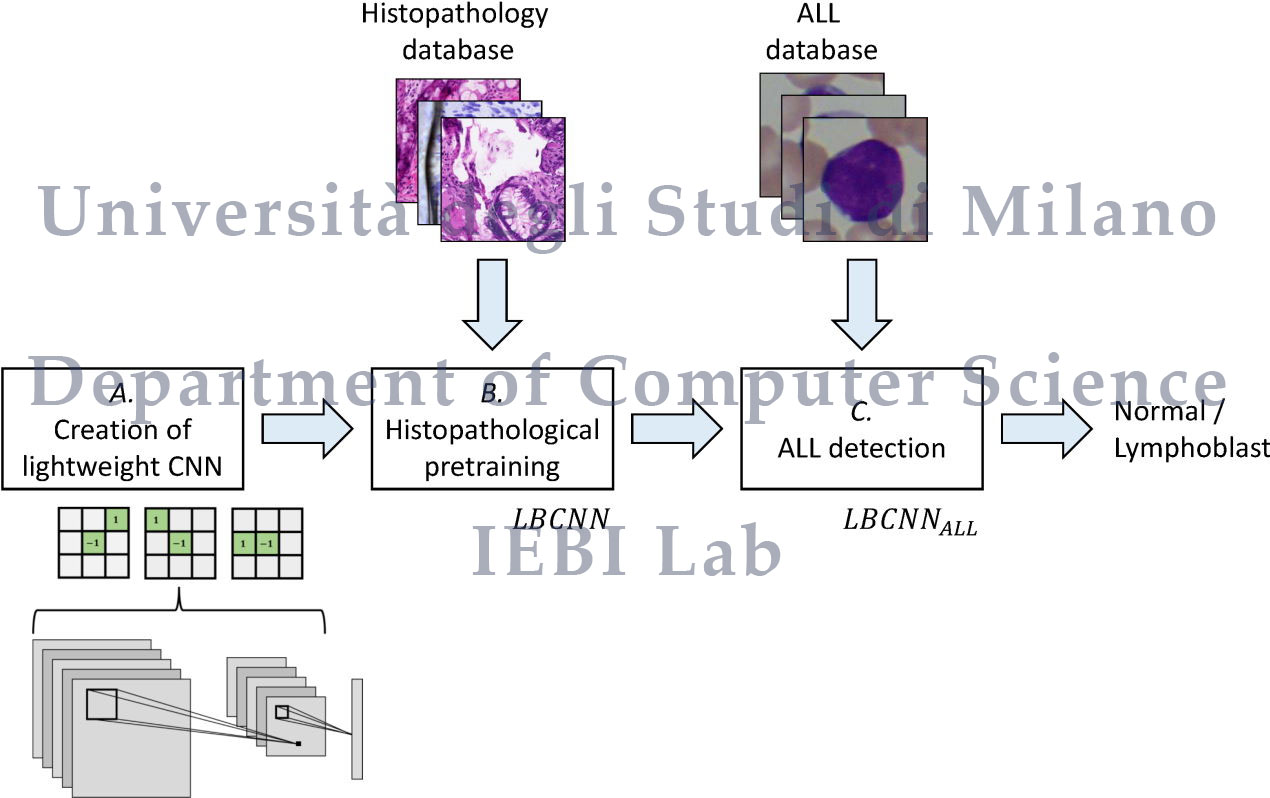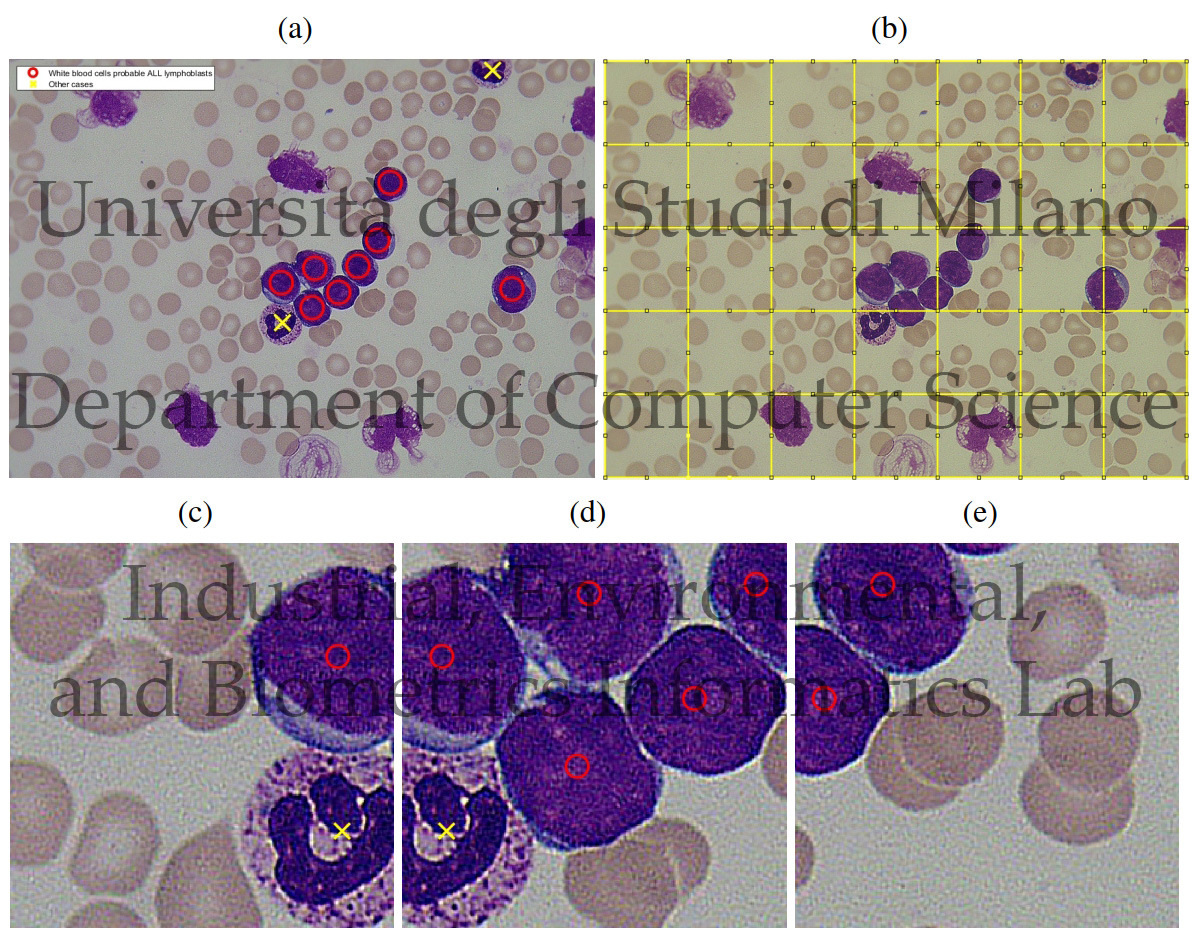ALL Detection Based on Deep Learning
- Acute Lymphoblastic Leukemia detection based on adaptive unsharpening and Deep Learning: [GitHub]
- Histopathological transfer learning for Acute Lymphoblastic Leukemia detection: [GitHub]
- ALLNet: Acute Lymphoblastic Leukemia detection using lightweight convolutional networks: [GitHub]
-
ALL-IDB Patches: Whole slide imaging for Acute Lymphoblastic Leukemia detection using Deep Learning: [GitHub]
- DL4ALL: Multi-task cross-dataset transfer learning for Acute Lymphoblastic Leukemia detection: [GitHub]
-
A decision support system for Acute Lymphoblastic Leukemia detection
based on Explainable Artificial Intelligence:
[GitHub]
Acute Lymphoblastic (or Lymphocytic) Leukemia (ALL)
is a disease that affects the blood cells, can spread rapidly
throughout the body, and may result in fatal consequences if
not detected at an early stage. One of the techniques routinely
used to diagnose ALL consists in analyzing White Blood
Cells (WBC) present in peripheral blood samples to look for
malformations or abnormalities. Such malformations
may be an indicator of lymphoblasts, which naturally occur
in the bone marrow. However, an elevated number of WBCs
with lymphoblast characteristics may be a sign of ALL.
Traditionally, the analysis of the WBC morphology is
performed manually by an expert pathologist, who looks at the
blood cells and estimates the concentration of lymphoblasts
present in peripheral blood. Such process, being extremely
repetitive and time-consuming, may lead to fatigue, with
the consequence that the pathologist could miss important
information correlated with the presence of ALL.
To overcome the disadvantages of a manual inspection
process, Computer Aided Diagnosis (CAD) systems are being
increasingly researched: such systems are often based on
image processing and machine learning and, by automatically
detecting lymphoblasts, can help the pathologist in performing
a preliminary screening of the blood samples. Among CAD
systems, recent methods are increasingly considering the use
of machine learning approaches based on Deep Learning (DL)
and Convolutional Neural Networks (CNN), due to their high
accuracy in several fields, including medical imaging.
In particular, CNNs have the ability of automatically learning
data representations, without the need for a handcrafted feature
extraction step, with the consequence that CAD systems based
on CNNs may be designed with limited knowledge of the
application scenario.






Project page: https://iebil.di.unimi.it/cnnALL/index.htm